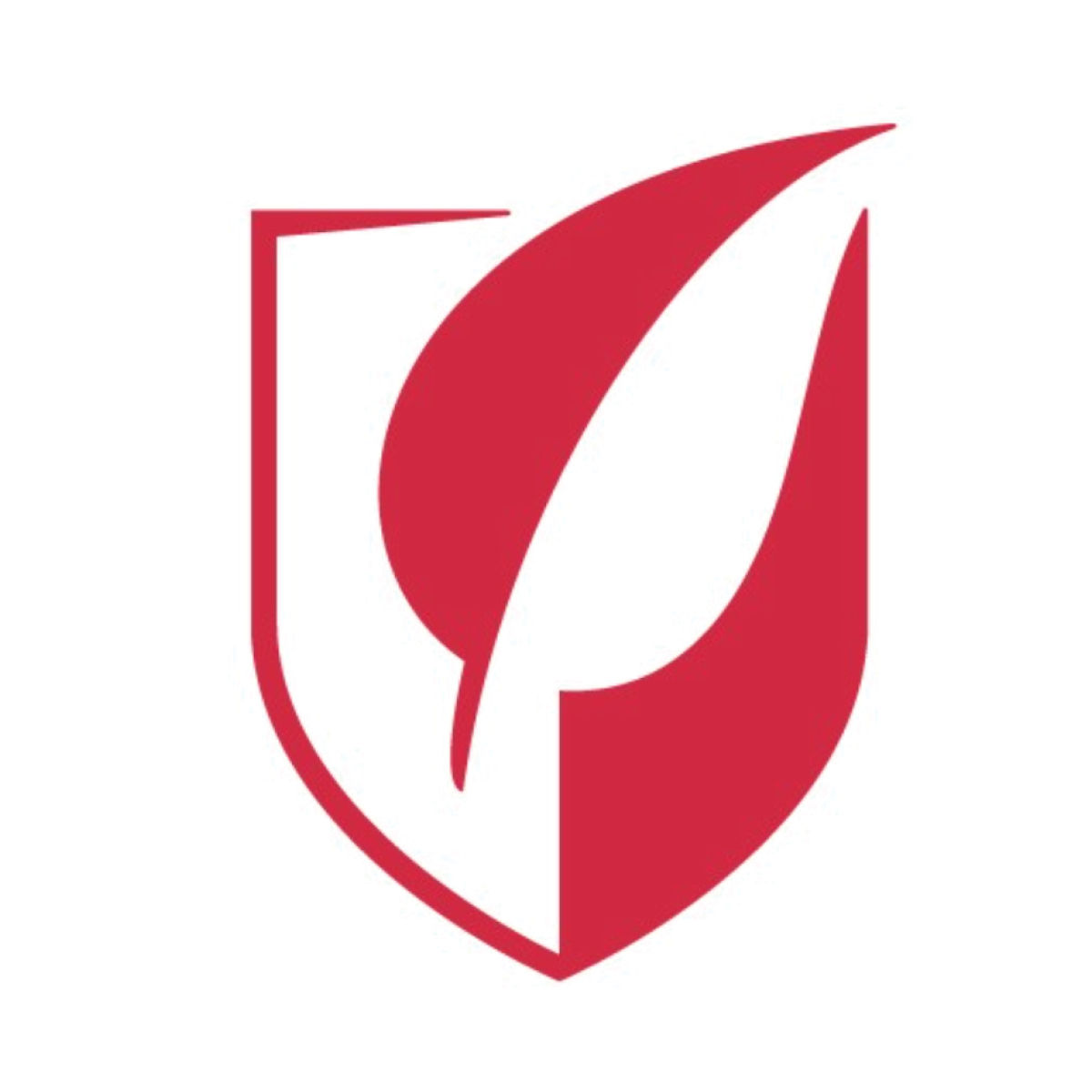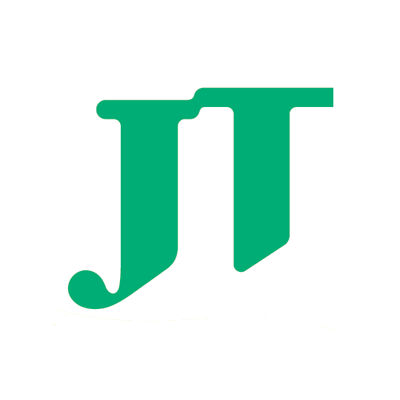预约演示
更新于:2025-11-15
Elvitegravir
埃替格韦
更新于:2025-11-15
概要
基本信息
药物类型 小分子化药 |
别名 Elvitegravir (JAN/USAN)、EVG、GS 9137 + [3] |
作用方式 抑制剂 |
作用机制 HIV-1 integrase抑制剂(HIV整合酶抑制剂) |
在研适应症- |
非在研适应症 |
在研机构- |
最高研发阶段撤市 |
首次获批日期 欧盟 (2013-11-13), |
最高研发阶段(中国)- |
特殊审评- |
登录后查看时间轴
结构/序列
分子式C23H23ClFNO5 |
InChIKeyJUZYLCPPVHEVSV-LJQANCHMSA-N |
CAS号697761-98-1 |
关联
19
项与 埃替格韦 相关的临床试验NCT06087913
A Phase I Randomized, Placebo-controlled, Double-blind Study to Assess Safety, Pharmacokinetics, and Modeled Pharmacodynamics of a Vaginal Insert Containing Tenofovir Alafenamide and Elvitegravir
MATRIX-001 will examine the safety, PK, modeled PD, and acceptability of inserts containing the combination of TAF and EVG applied vaginally, daily for 3 days, then every other day for 14 days. The inserts are ultimately intended to be the basis of an event-driven, on-demand method for prevention of HIV and HSV sexual infection.
开始日期2023-11-08 |
申办/合作机构 |
ChiCTR2200061677
Impact of different antiretroviral therapy (ART) regimens on lipid metabolism in people living with HIV
开始日期2022-06-30 |
申办/合作机构 |
ChiCTR1900027321
Prospective, non-inferior, randomized controlled trial of post-exposure prevention regimens for HIV
开始日期2019-11-08 |
申办/合作机构  中山大学 中山大学 [+1] |
100 项与 埃替格韦 相关的临床结果
登录后查看更多信息
100 项与 埃替格韦 相关的转化医学
登录后查看更多信息
100 项与 埃替格韦 相关的专利(医药)
登录后查看更多信息
1,272
项与 埃替格韦 相关的文献(医药)2025-12-01·INTERNATIONAL JOURNAL OF INFECTIOUS DISEASES
Talaromyces marneffei infection involving the central nervous system in a patient with acquired immunodeficiency syndrome: A case report and literature review
Review
作者: Ye, Xiao-Fang ; Chen, Chun-Nuan ; Xu, Ying-Ying ; Li, Mi-Mi ; Huang, Wan-Li ; Jiang, Ri-Feng ; Wang, Mei-Feng ; Ba, Xiao-Qun
BACKGROUND:
Talaromycosis, an opportunistic deep invasive mycosis, is caused by the fungus Talaromyces marneffei and is predominantly observed in individuals with acquired immunodeficiency syndrome (AIDS). Involvement of the central nervous system (CNS) is exceedingly rare and presents significant diagnostic challenges, often associated with high mortality rates.
CASE PRESENTATION:
This report details a case of CNS Talaromyces marneffei infection in an AIDS patient who initially presented with epileptic seizures. Neuroimaging identified a ring-enhancing lesion within the right frontal lobe, concurrent with a marked elevation in serum β-D-glucan levels. The diagnosis was confirmed through a multimodal approach, including histopathological examination and metagenomic next-generation sequencing (mNGS). Postoperative management involved a sequential regimen of amphotericin B followed by voriconazole, leading to a favorable recovery. The patient is currently on a maintenance elvitegravir-based antiretroviral therapy regimen.
CONCLUSIONS:
CNS Talaromyces marneffei infection in AIDS patients often lacks specific clinical manifestations, which complicates diagnosis and treatment. This case report contributes to the existing body of knowledge by presenting a successfully managed case, thereby enhancing the understanding of diagnostic and therapeutic strategies for similar future presentations.
2025-11-01·Journal of Infection and Public Health
Switch to bictegravir/emtricitabine/tenofovir alafenamide in people living with HIV aged 65 years or older: BICOLDER study – IMEA 057
Article
作者: Lê, Minh P ; Joly, Véronique ; Peytavin, Gilles ; Allavena, Clotilde ; Neau, Didier ; Ajana, Faiza ; Charpentier, Charlotte ; Isernia, Valentina ; Assoumou, Lambert ; Benalycherif, Aïda ; Phung, Bao ; Descamps, Diane ; Landman, Roland
BACKGROUND:
Polymedication and comorbidities are frequent in aging people with HIV (PWH) and often associated with elevated incidences of adverse events (AEs) and drug-drug interactions (DDIs). The objective of this study was to evaluate the efficacy, safety and practicality of bictegravir/emtricitabine/tenofovir alafenamide (B/F/TAF), an antiretroviral (ARV) therapy with limited DDIs, in an elderly virologically-controlled PWH population.
MATERIALS AND METHODS:
This study was prospective, multicentric, single-arm conducted in HIV-1 controlled PWH aged over 65 years who switched from a ritonavir- or cobicistat-boosted containing regimen to B/F/TAF. The primary outcome was the proportion of participants maintaining plasma HIV-1 RNA < 50 copies/mL at Week24. Secondary endpoints included biological endpoints and co-morbidity (Charlson) and frailty (Fried) scores. Median (IQR) results are presented.
RESULTS:
24 participants aged 69 years (67-73), 79.2 % Caucasian, were analyzed in the intention-to-treat analysis. 75 % of participants were receiving an elvitegravir/cobicistat based regimen. At week24 and week48, 91.7 % of participants maintained a plasma HIV-1 RNA < 50 copies/mL. Study treatment was discontinued in one participant due to virologic failure at week12, possibly related to adherence issues following AE. Drug-related AEs were reported in 6 participants, with one discontinuation at week4 (nightmare/mood disorder). No life-threatening AEs or deaths were reported. No significant modifications from baseline were reported in weight, co-morbidities, kidney parameters, cardiovascular risk or frailty scores at W48. A mild decrease of total cholesterol and triglycerides was reported.
CONCLUSIONS:
The findings indicate that B/F/TAF is both safe and effective for elderly PWH patients with a prolonged and documented history of HIV infection, multiple co-morbidities and concomitant medication.
2025-09-01·EUROPEAN JOURNAL OF PHARMACOLOGY
METTL3-driven m6A modifications in esophageal squamous cell Carcinoma: Emerging mechanisms, biomarker potential, and therapeutic innovations
Review
作者: Chun, Hua ; Baima, Kangzhuo
Esophageal squamous cell carcinoma (ESCC) remains a highly aggressive malignancy with limited diagnostic and therapeutic advancements, underscoring the urgent need for novel biomarkers and targeted therapies. Methyltransferase-like 3 (METTL3), a pivotal regulator of N6-methyladenosine (m6A) RNA modification, has emerged as a critical player in cancer pathogenesis. This review synthesizes current evidence to elucidate METTL3's multifaceted roles in ESCC progression, metastasis, and therapeutic resistance. Mechanistically, METTL3 promotes tumorigenesis by orchestrating m6A-dependent regulation of oncogenic pathways, including EGR1/Snail, Notch, and c-Myc signaling, while suppressing tumor suppressors like APC. Clinically, METTL3 overexpression correlates with advanced tumor stage, lymph node metastasis, and poor prognosis, highlighting its diagnostic and prognostic utility. Furthermore, METTL3 enhances radioresistance via DNA repair modulation and drives metabolic reprogramming through targets such as GLUT1 and GLS2. Emerging therapeutic strategies targeting METTL3, including small-molecule inhibitors [e.g., Elvitegravir] and RNA-based interventions, demonstrate preclinical efficacy in suppressing ESCC proliferation and metastasis. This review also identifies critical knowledge gaps, such as the interplay between METTL3 and tumor microenvironment dynamics, and advocates for multicenter studies to validate its clinical applicability. Collectively, our findings position METTL3 as a promising biomarker and a tractable therapeutic target, offering actionable insights to advance ESCC management.
23
项与 埃替格韦 相关的新闻(医药)2025-11-12
·百度百家
基于类器官的高通量筛选(HTS)正在彻底改变药物研发模式。然而,传统HTS设备处理细胞外基质(ECM)组分的复杂性,导致类器官在筛选过程中被迫采用悬浮培养体系,这种改变会引发其转录组特征与药物应答的显著变异。尽管目前已建立3D ECM包埋类器官的自动化生成技术,但操作简便性与时间效率的局限仍构成实现高通量化的关键障碍。
该研究开发了一种全流程三维ECM包裹类器官自动化高通量筛选(wp3D-OAHTS)平台,其通量性能显著优于现有已报道的三维类器官药物筛选系统。该自动化平台在13天内成功构建了超过10,000个均质化的神经内分泌宫颈癌(NECC)三维类器官穹隆结构,并系统评估了其对2,802种化合物的药物反应。
这种高效且可重复的研究方法最终成功筛选出5种能显著抑制NECC类器官生长的优选化合物,IC50低于10 nM。代表性候选药物Quisinostat 2HCl展现出显著优于临床现有药物的抗肿瘤疗效。
该平台显著提升了三维细胞外基质包裹类器官药物筛选的速率与效率,为罕见病新药研发提供了有力支持。
图形摘要
文章介绍
题目:全流程三维细胞外基质包裹类器官自动化高通量筛选平台加速罕见病药物研发
英文题目:Whole-process 3D ECM-encapsulated organoid-based automated high-throughput screening platform accelerates drug discovery for rare diseases
杂志:Life Medicine
影响因子:6.0
PMID:41089667
发表时间:2025年10月
Part.01
研究背景
类器官在HTS中的应用,尤其是患者来源类器官(PDO),已在药物研发与精准医疗领域获得广泛认可。类器官通常由封装在ECM中的干细胞或祖细胞发育而成,这种基质对于建立类组织架构、细胞间通讯以及细胞-ECM相互作用至关重要。
为适应基于传统液体分配器的高通量筛选平台,类器官培养方式被迫调整——使细胞悬浮于低基质环境中而非封装在三维ECM内。但即便短期悬浮培养也会导致类器官转录组特征改变,包括肿瘤标志物表达和关键信号通路的变化,这可能影响肿瘤细胞的药物敏感性。
为克服悬浮类器官高通量筛选与现有三维类器官高通量筛选的局限性,该研究开发了全流程三维细胞外基质包裹类器官自动高通量筛选平台(wp3D-OAHTS)。
基于该平台,针对NECC开展了包含2802个小分子的三维类器官HTS,鉴定出7种化合物具有显著活性。代表性候选药物Quisinostat 2HCI对NECC异种移植瘤生长的抑制作用优于现有临床用药。
总之,该平台在新药研发(尤其是罕见病治疗领域)具有重要应用潜力。
Part.02
研究关键点
开发一种全流程3D ECM封装类器官的自动化高通量筛选平台(wp3D-OAHTS),通过自动化操作实现大规模3D类器官的快速生成和药物反应的自动化评估。
利用wp3D-OAHTS对NECC类器官进行两步分层式高通量药物筛选,从2802种小分子化合物中筛选出具有低IC50的候选药物,并验证其药效。
体内实验验证Quisinostat 2HCl的抗肿瘤效果,证明其作为NECC治疗药物的潜力。
Part.03
研究结果
1、面向三维ECM包裹类器官构建与药物筛选的自动化高通量平台
wp3D-OAHTS多功能平台可兼容多种类器官培养。该平台集成三维ECM封装类器官点样仪、液体分配模块、自动化温孵模块及多模式检测模块(图1A),能在80%(体积比)ECM浓度下完成类器官封装与维持,实现完全基于三维ECM封装类器官的大规模高速药物筛选。
此外,三维ECM包埋类器官点样仪是处理ECM组分的关键设备。细胞-基质混合物经冷却控温、混匀后快速点样至孔板,随后进行凝胶化、培养基添加和孵育培养,全程由机械臂自动化操作,实现类器官生长监测和药物筛选,wp3D-OAHTS平台10天可筛选8694种药物,显著提升高通量筛选效率(图1B)。
图1
2、通过wp3D-OAHTS平台优化3D ECM包裹类器官培养的均质性与可重复性
手动分配ECM存在显著的孔间变异性,而自动点样仪能确保每个孔内精确的中心定位和微小的孔间差异,为生成稳定的3D ECM封装类器官提供了基础。
进一步测试表明,该平台培养的宫颈癌、胃癌和结直肠癌类器官展现出稳定的尺寸、形状均一性和强劲的增殖能力,活性测定结果分布区间狭窄,显著降低了类器官的变异性。
这些结果证明wp3D-OAHTS平台能够生成高度生物活性的均质化、可重复的三维ECM包裹类器官,其高精度和可靠性使其成为基于三维类器官的大规模高通量筛选的理想系统(图2)。
图2
3、wp3D-OAHTS平台支持在人类NECC类器官上进行2802种药物筛选
利用wp3D-OAHTS平台和包含2802个小分子化合物的药物库检测NECC患者来源类器官细胞系的药物敏感性。将NECC类器官单细胞与ECM混合后自动点样至12996孔板中培养,表现出高度均质性和强增殖能力。
在加入2802种化合物处理后,筛选出583种抑制率超过90%的化合物。所有筛选板的Z'因子均高于0.7,且对77种化合物的独立检测显示高度相关性,证明了平台的准确性、稳健性和可重复性。
在对NECC类器官进行药物筛选时,自动化平台识别出8种活性化合物,而手动筛选仅识别出6种,遗漏了RSL3和Elvitegravir。自动化平台展现出更好的重复性和准确性。
在583个初筛阳性化合物中,392个对NECC类器官有致死效应,且多数为在研药物,仅154个是FDA批准的。这些化合物的作用机制多样,其中蛋白酪氨酸激酶抑制剂占比最高。这表明该平台能揭示罕见疾病的未知靶点,为药物研发提供新方向(图3)。
图3
4、通过反向药物浓度梯度筛选确定了7种具有NECC扩展适应症潜力的候选药物。
为缩小NECC有效候选药物范围,从初筛活性化合物中选取前50种,采用1 μM和0.1 μM两种浓度进行二次筛选。结果在1 μM浓度下筛选出15种候选药物,在0.1 μM浓度下筛选出7种。
这些化合物涵盖多种作用机制,其中DNA损伤抑制剂和表观遗传调节剂占比较高。在0.1 μM浓度下,7种最有效的化合物(Quisinostat 2HCl、Topotecan HCl、Epirubicin HCl、Mitoxantrone 2HCl、Ixazomib、Clofarabine和Flavopiridol)显著降低类器官存活率并引发细胞死亡。
进一步的剂量效应曲线分析显示,这7种化合物均以剂量依赖性方式抑制NECC类器官生长,半数抑制浓度在纳摩尔水平,其中5种化合物(Mitoxantrone 2HCl、Clofarabine、Quisinostat 2HCl、Epirubicin HCl、Topotecan HCl)的半数抑制浓度低于10 nM,显示出高效性和作为NECC治疗候选药物的巨大潜力(图4)。
Mitoxantrone 2HCl、Clofarabine、Epirubicin HCl、Topotecan HCl和Ixazomib均为FDA批准的上市药物,而Quisinostat 2HCl与Flavopiridol为曾进入临床试验研究阶段的化合物。FDA目前批准的这些药物适应症中并不包含NECC,且Quisinostat 2HCl与Flavopiridol的临床试验数据也未涉及NECC治疗。
本研究结果表明,这两种药物具有扩大治疗适应症范围至NECC的潜在临床应用价值。
图4
5、代表性药物Quisinostat 2HCl对NECC展现出显著抑制效应
接下来聚焦于新型药物Quisinostat 2HCl,其IC50效价低于10 nM。经0.1 μM Quisinostat 2HCl处理48 h的NECC类器官转录组分析显示,有3815个差异表达基因,涉及多种代谢通路的显著下调,表明该药物可能通过代谢重编程抑制NECC类器官生长。
体内实验中,将NECC类器官移植至裸鼠皮下,Quisinostat 2HCl(10 mg/kg)隔日腹腔注射20天,显著抑制了异种移植瘤的生长,瘤体积和重量均减小,Ki67阳性细胞比例降低,cleaved caspase 3+细胞比例增加。与紫杉醇/卡铂联合方案相比,Quisinostat 2HCl单药治疗效果更优,展现出作为NECC治疗药物的潜力。
图5
6、wp3D-OAHTS平台通过限制类器官悬浮导致的假阳性,实现精准的药物反应检测
为探究基质低悬液培养条件是否会改变类器官药物筛选结果,该研究从2802个小分子化合物的3D ECM包埋类器官药物筛选数据中,选取了不同抑制率区间的化合物,在低基质悬浮培养的NECC类器官中进行验证实验。
在悬浮筛选中,类器官在给药当天会从ECM脱离,处于非贴壁悬浮状态,与全流程3D ECM包裹类器官筛选不同。在NECC类器官的药物筛选中,全流程3D ECM筛选与悬浮筛选结果存在差异。在3D筛选中无反应的化合物在悬浮筛选中表现出更高敏感性,且抑制率在30%-60%的化合物在悬浮筛选中抑制率显著提升。
这表明降维至二维悬浮系统可提高药物筛选命中率,但可能无法准确反映类器官在三维环境中的真实药物反应及耐药特征。三维ECM封装类器官筛选能保持类器官的三维结构,更准确地重现药物反应,对高通量药物筛选具有重要价值(图6)。
图6
小结
该研究开发的自动化类器官高通量筛选平台实现了大规模3D类器官的快速生成与药物反应自动化评估,相比人工操作更均一、精确且高通量。
利用该平台对NECC类器官进行两步分层式高通量药物筛选,从2802种小分子化合物中确定了7种具有极低IC50的候选药物,其中Quisinostat 2HCl在体内展现出显著抗肿瘤效果。
该平台通过消除悬浮培养导致的假阳性干扰,实现了精确的药物反应评估,显著提升了罕见病新药研发的速度与效率。
参考文献
Xu Z, Yang H, Zhou Y, Dzakah EE, Zhao B. Whole-process 3D ECM-encapsulated organoid-based automated high-throughput screening platform accelerates drug discovery for rare diseases. Life Med. 2025 Jun 14;4(5):lnaf021. doi: 10.1093/lifemedi/lnaf021.
临床研究
2025-11-01
·雪球
2025103100:50我是荣昌生物CFO童少靖,我首先介绍一下公司三季度的财务状况。营业收入方面,第三季度收入6.22亿元。环比增长8.7%,前三季度实现收入17.2亿元,同比增长42.3%。毛利率方面,第三季度综合毛利率84.6%,与二季度持平。前三季度综合毛利率为84.3%,同比增长。增长4.5个百分点。销售费用方面,第三季度销售费用率为47.7%,环比下降0.4个百分点。前三季度销售费用率为47.8%,同比下降3.7个百分点。研发费用,第三季度研发费用是2.43亿元,环比有比较大的下降23.5%。前三季度累计8.9亿元,同比下降22.8%。公司的研发费用下下降主要是由于之前做的管线优化。材料开支、临床开支及员工薪酬等均有不同程度的下降。另外,从第三季度开始,RC118海外授权之后。海外临床试验及相关费用由对方承担,所以第三季度有一个比较明显的研发费用下降,管理费用方面,前三季度是2.16亿元,同比下降8%。这个下降一方面是由于人员优化,总体的这个人员薪酬降低,此外办公费用也有一定程度的下降。总的净利润前三个季度的情况是,一季度亏损2.54亿元,二季度亏损1.95亿元。三季度亏损1.01亿元,亏损逐逐季递减,本季度亏损环比下降48.3%。前三季度累计亏损5.5亿元,较去年同期的5.2亿元,有48.6%的一个下降,我们减亏趋势还是非常明明显的。资金状况,截止930,账面现金及票据、银行理财总共大概是14.5亿元。同时公司可用的授信额度在35亿元。财务状况介绍到这里,下面交给房博。好的。各位同志,早上好,我是荣昌生物首席执行官房健民。我来介绍一下我们这个产品管线的研发进展。首先是RCE18。泰它西普,泰它西普这个,IGA肾病,这个深圳,Wenshan三级临床试验,已经申报中国的这个上市申请。那么另外就是将在最近第四季度在美国深科年会披露具体的数据。第二个适应症是干燥综合症。这个深深圳也已经在中国申报上市申请,那么有关的数据最近已经公布了,在美国的风湿年会公布了。第三个问题是关于这个SLE,就是狼疮。狼疮最近中国的三级机构发表的国际顶级的医学期刊,新英格兰医学杂志。此外,我们还有一些新的适应症的三期正在启动,包括眼肌型的MG,就是重症肌无力,抗基底组织间质性肺炎的三期正在启动。所以RC18还是有不少事情在做。另外,RC18的海外,因为这个授权给了VOXBIO,那么目前正在进行这个全球的三期临床试验,正在入组中。另外一个适应症,就是干燥综合征,已经正在积极准备启动全球的三期。这是RC18海外,那么RC48中国的情况,就是我们最近有尿路上皮癌适应症,这个联合一线联合PD1治疗。一线的,123,比亚,3期临床实验的,这个ESMO,获得主席论坛的口头报告。这也是少数几个,这个主席报告之一。那么同时同步在新英格兰医学杂志发表,那这个结果,可能大家也都看到了。RC48,联合一线,这个胃癌的,HER2低表达的三期临床,那么这个三期临床,我们正在进行当中,正在快速入组病人。对于一线和HER2高表达的人群的二期取得积极进展,大家可能就看到了,那么正在启动这个三期的临床实验。RC48海外,海外的是有两个重要的临床试验正在进行当中,一个是二线的尿路上皮癌的一个单臂的关键临床试验,这个是准备BLA申报的。那么这个实验进展顺利。然后第二个实验,是一线联合PD-1治疗这个尿路上皮癌的3期临床实验,正在入组,而且最近的入组速度还是挺快的,也是说进展顺利。所以总体来说,海外这两个关键领导实验都进展顺利。那么下面是一个RC148,RC148是个PD-1、VEGF双抗,那么这个分子,我们最近,我们这过去的一段时间,经过了这个快速入组了很多病人。那么进展还是取得进展。那么单药治疗一线非小细胞肺癌,以及联合化疗治疗二线非小细胞肺癌,这实验数据,这个相对来说,已经是随访时间比较长了。那看到了这个比较好的疗效,而且安全性良好。那么后面,可能适当的这个会议,我们会报道。那么联合这个RC148联合治疗一线,需要是联合治疗一线非小细胞肺癌的这个二期临床试验也也已经完成了,完成入组。那么目前正在随访之中,也看到了比较好的疗效和安全性。同时,我建议这个,因为这个竞争格局非常激烈,然后这个速度也很快,所以我们正在计划启动。联合治疗非小细胞肺癌的III期临床试验,这个正在计划启动当中。联合ADC方面,我们最近在ESMO这个做了一个口头报告,报告了RC118,就是C18.2。联合RC148,这个二线胃癌的这个疗效和安全性,这个数据还是比较不错的,安全性也非常优异。那展示出双抗和ADC联合的巨大的潜力。下一个分子是RC278,这是一个公司采用新的ADC技术,这一个ADC药物。那么目前,正处于剂量的爬坡之中。最后一个分子要介绍的是RC28,这是个眼科的VEGF、FGF双靶向的分子。那么目前两个适应症,这个一个是DME,那么已经在中国申报BLA上市申请。那么WMD就是老年湿性黄斑变性,那么计划在2026年申报上市申请,那么这个都按照以前的计划在推进。那么我把这个研发管线情况就这样,谢谢大家。那各位投资人大家好,我是那个免疫事业部这个吴静平。我把泰它西普的销售进展,给各位投资人,做一个汇报。第一个是销售的情况。泰它西普,2025年前三季度的收入大约是10.3个亿,同比2024年增长52%。那其中第三季度收入为3.8个亿,同比2024年的三季度增长41.4%。那2025年的三季度环比2025年的二季度增长12.6%。第二个是人员的情况,截止到2025年9月30号,商业化销售团队900人左右。第三个准入的情况,截止到2025年的9月30号。合计已经准入超过了1000家医院,正式准入的超过了600家。那在2025年,第四个,就2025年1~9月份的销售情况。泰它西普各个适应症,均是按计划完成了销售的目标。第五个,未来的市场策略及增长的一个空间。在风湿领域,系统性红斑狼疮,在2025年的前三个季度。泰它西普在系统性红斑狼疮的销售继续是维持快速的增长,销售是达成并且超越了年初的计划。现在,成人系统性红斑狼疮的新增的使用生物制剂的患者,几乎现在都是在使用泰它西普。泰它西普系统性红斑狼疮三期的研究结果10月份在新英格兰杂志发表后,也得到了国内专家非常大的这个认可。我们也在全国对新英格兰三期的结果这个报告进行一个解读。泰它西普真实世界,三,长期的,现在是三年的研究的数据已经有了,正在进行统计分析。这个报告出来之后,将会对泰它西普长期使用的疗效、安全性、器官保护、激素减停等,给所有的中国专家提供有力的循证医学的支持。在干燥综合征上,泰它西普治疗干燥综合征三期研究取得非常好的疗效和安全性结果。四季度,将会以所有的公司专家进行数据的解读。同时,泰它西普治疗干燥综合征真实世界的回顾性的研究已经完成,正在进行文章的撰写。这个回顾性的研究对于不同类型的干燥综合征患者使用泰它西普治疗的疗效提供了详细的分析,有助于上市后的临床推广。在前三季度,干燥综合征销售也是大幅的增长,全年预期能达成年初设定的这个目标。类风湿关节炎的适应症,在难治性的类风湿关节炎、其他疾病合并类风湿关节炎,使用泰它西普治疗,现在我们这一个观点。得到了中国风湿专家的认可,并且中国专家也在积极的使用。第二个就是肾科领域,泰它西普治疗IGA肾病的三期研究取得了非常好的疗效和安全性的结果。同样,四季度我们将会以所有的肾科专家进行数据的解读。那IGA,泰它西普治疗IGA,也得到越来越多的中国肾科专家的认可。10月份的中华医学会肾脏病年会上面,泰它西普的研究壁报,全国的专家发表的达到了55篇。那刚刚发布的中国首部IGA和IGAVN的指南中,泰它西普也成为唯一的一个推荐的,布利斯和阿普洛双靶治疗的药物。泰它西普治疗IGA前三季度销售大幅的增长,全年将会超越年初设计的目标。同时,泰它西普治疗狼疮肾也越来越得到肾科专家的认可。前三季度销售增长非常迅速。在神免领域,中国神免专家从机制到疗效,对泰它西普治疗MG都予以了认可。泰它西普虽然在今年年初的时候没有获得适应症,但是今年仍然是进入了2025年年初中国MG诊断与治疗指南,并且获得了ACHR阳性的全身型。成人重症肌无力治疗的推荐,在5月份泰它西普治疗MG获得适应症之后,三季度使用泰它西普治疗MG的新患者快速的增长。同时在神免领域,其他B细胞相关神免疾病的探索使用,也都有积极的一个进展。那我的汇报完毕,谢谢。各位投资人好,我是李建彬,负责维度系统单看的一个销售。那下面我来汇报一下这个维度西洛和第三,在第三季度的一些销售情况。第一个就维度西洛单看,2025年前三季度收入。6.8亿元,同比增长31.7%。其中三季度收入2.4亿元,同比增长21.4%,环比增长3.5%。人员情况的话,截止2025年9月30号。商业化销售团队超过500人,人数基本与去年与去年持持平。转入的情况是截止2025年9月30号。合计已经转入超过1000家医院,正式转入450家左右。2025年Q3的一些销售和Q4的Q4的一些策略。在那个UC方面,Q3前线,UC的前线继续保持保持较好的一个增长势头。在基层浸润性膀胱癌和高危的非基层浸润性膀胱癌。都呈现出高速的增长。在C017新物质推广方面,促进了潜性患者DVT的显著改善。在Q4,第一个是巩固泌尿领域全分期的精准喝吐,有把,打靶的观念。基于C016的个数据,规范晚期的尿路上皮癌,全喝吐人群的个精准诊疗。第三个强化个性患者的强化各个各个性数患者的流体的管理。第四个加速突破高危NFBC跟MABC的新辅助。UC1系的三期临床研究数据,10月份在欧洲肿瘤内科学会口头报告,并同步发布顶级的医学期刊新英格兰医学杂志,作为全球首款。在UC一一线大三期成功的、抗HER2的ADC,必将成为UC一线治疗新的治疗标准。另外,我们在UTUC保肾NMRBC也有很好的数据的文章投稿,健康后也将会,也必将进一步推动业务的增长。在GC方面,Q3GC晚期线、维持初期同比都有大幅增长。GC在2025年的Q3同比增长了18%。增长主要来自于晚期一线、维数数期,就是辅助加新辅助的一个业务的拓展。晚期一线同比大概增长了120%,维数数期同比增长108%。在Q4,主要通过2025年阿斯口会期间,晚期一线C027的一些研究,RCT的研究,还有一些GC新物质的一些研究数据。全面推动,即使潜性市场高速增长。我们将继续通过ASCO相关数据的延续。GC前景推广的一些策略,GC晚期二线、三线以及四。晚期二线和三线以后的市场,作为医保汇集的人群,仍然占有GC销售的大部分。我们将继续挖深肿瘤内科晚期后期胃癌的市场,扩面下沉。同时进行肿瘤内科晚期后线、半肿瘤、呵、抗、呵吐治疗及推广。在BC方面,在Q3环比增长3%,随着2025年4月30号我们在HER2阳性晚期乳腺肝转移适应症的获批,并且在8月8号举办了全国BC适应症的上市会,BC业务开始触底反弹。在Q4,我们将继续聚焦乳腺肝转移的患者。推动维迪西妥单抗在HER2阳性晚期肝转移患者的二线使用,同时针对竞品ADC的间质性肺炎的安全性的问题,抢占。肺部放疗时,肺功能不全的晚期,HER2阳性乳腺癌患者的二线应用。对于晚期乳腺癌的ADC序贯应用,突出维迪西妥单抗和竞品不同载药的特点,所以可以互为前后线应用。全面推动维迪西妥单抗在晚期、初治阳性、二线及二线以后的市场推广。HER2阳性晚期乳腺癌二线。即将进行新适应症医保谈判,如果顺利,2025年BC市场将带来快速增长。同时,国家卫健委已连续两年匹配专项基金。开展覆盖全国医疗机构的尿路上皮癌HER2免疫组化检测项目,建立了尿路上皮癌HER2免疫组化规范检测体系。并将HER2检测纳入尿路上皮癌诊疗规范的必要流程,这将为维迪西妥单抗的使用提供强有力的伴随诊断依据。进一步强化维迪西妥单抗的竞争优势。好,我的介绍就到这里,下面把话筒交给主持人。好的,谢谢各位管理层的专业耐心介绍,非常专业,非常让人振奋。公司的研发和商业化都取得非常显著的进展。现在进入互动提问环节。先请分析师提问,我率先抛砖引玉问第一个问题:公司如何看待国内IgA肾病用药市场竞争格局,以及泰它西普相比于激素。补体类其他机制药物的优势在什么地方?好,那谢谢提问,我是吴静平。泰它西普,现在在国内的主要竞争产品,是在免疫方面的治疗药物。例如,布地格德的肠溶胶囊、依泊可盼,还有斯贝利单抗。作为这几个产品,布地奈德肠溶胶囊是现在唯一一个进入医保的这个产品,那今年是放量年,销售是快速在增长的。但今年泰它西普基于最优的疗效,目前仍然是在IGAN这个治疗领域里面使用最多的生物制剂。依库可盼今年是获批了IGA的适应症。31.69万盒,一一点六九万一盒的价格导致患者使用也受到限制。4B单抗预计在明年初会获得IGA的肾病适应症。预计单价售价,单次售价也在2万左右。所以,明年,泰它西普主要的竞争对手,还是布地奈德肠溶胶囊。但后年,随着其他产品进入医保。竞争格局又会发生新的变化。和激素相比,泰它西普起效更快、疗效更优、可以长期使用、副作用也更低。激素的副作用其实很很多很明显,包括满月脸、体重的增加、高血压等等。以高,以补益类的这个药物相比,那泰它西普作用更全面。它是抑制全身B细胞和浆细胞,抑制全身的gdidaone。和抗GDIJ1抗体。那这个对补体而言,补体是抑制下游补体的炎症反应,对致病性的IJ1的合成生成并没有抑制作用。第二个,泰它西普跟补体的药物相比,疗效更优。我们有以一不可判的数据相比,9个月的蛋白尿下降,泰它西普是55%。然后,依可帕是35百分之,同时使用是更方便的。泰它西普的这个虽然是注射的,这个针针剂,但是在使用的时候,是直接是可以注射。医不可叛,作为一个补体类的药物,在使用前患者要接种肺炎球菌疫苗和脑膜炎的球菌的疫苗。第四个就是价格更优和补体类的药物。所以这是这个,就是泰它西普的一个竞争格局的一个汇报,谢谢。好的,各位领导、各位老师,早上好,我是XX证券的创新药分析师XX。刚才整个管理层对于我们整个的这个销售和研发,我觉得各方面,介绍的应该非常全面,然后公司可以说各个方面,都处于一个非常,一个勃勃向上的态势。我自己感兴趣的一个问题就是在这次的这个ESMO这个主席研讨会环节,我们汇报了我们这个RC48。针对这个一线的,这个UC的这么一个数据,应该说是非常亮眼,也在这个信达证券研发中心进行了一个发表。然后我们也关注到了这个深圳,今年的7月份,公司也提交了一个上市申请。就是因为我们也,年初的时候我们也看到了这个K药联合EVG,这针对于这个一线UC的一个获批。所以我们想更清晰了解一下这个问题,就是说我们这个在RC48联合这个PD1,在这个一线UC这个市场里面的,我们这个产品的这个定位。包括我们相比于竞品的这个优势,包括我们这个深圳获批以后,对于我们整个销售的一个展望。好的,谢谢提问。我是李建彬,我来回答一下这个问题。248在EUC1新的这个地位,那肯定是处于领导者的地位。在以前,就是我们这个数据没发表,发布之前,在以前的C014研究的时候,我们因为基于C014的研究,我们原来也有异性的病人。在那个时候,我们的UC市场已经被很多的指南,特别是中国的CISC指南,列入一个UC推进的一个地位。当然它的原来的那个推进的这个证据级别可能没有EV加K要高,那随着我们这个C016数据的发布,我相信在明年年初,在这个CISC指南制定的时候。我相信肯定会被这个定位在首选一线,UC一线市场,UC一线推荐的一个首选地位,这是第一个。至于我们的一些疗效跟安全性方面,跟那个EV和K药的比较来看,就像我们有,我们的疗效应该是优于EV的,特别是在PFS方面,我们的HR是0.36,他们是零点四几,好像是,此外,我们的p值,还有一个我们安全性方面应该比EV加K的疗效也会更好。EV加K,它的安全性数据是跟对照组比的,它是百分之五十几,而对照组是百分之六十几。EV加K,它是百分之五十几的一个三级以上不良反应。化疗组是百分之六十几的一个三级以上不良反应。在我们的研究里面,我们的对照组,病人的恶性程度更高,他的三级以上不良反应百分之八十几。用了我们这个阿西司他加特立普利以后,我们的安全性数据,三级以上不良反应百分之五十几。也就安全性也改善了很多。还有个更重要是我们的价格优势非常明显。我们因为是前两年就进了医保,虽然在UC的一线我们是自费的一个阶段,但是我们的价格应该是他的,在自费的价格也是他们大概1/3左右的价格。这价格就有了非常强的优势。还有个最重要的是我们准入状态会比他们好太多,因为在中,在国内的绝大部分的一些医院,都已经可以准入,都已经准入了全国最主要的医院。病人这个购药应该会非常方便。对于医院来讲的话,它准入的医院应该是非常少。所以不管在哪个方面,我们在国内应该是,是非常,对医院来说是非常强大的优势。我的汇报在这里。好的,谢谢。各位领导好,我是华泰XXX,我这边简单提两个问题。第一个是关于泰它西普的商业化,MG这就是泰它西普的一个问题,我们看到国内的这个MG市场,刚才吴总也简单提了一下,我们看到现在有一些这个整体的创新药的这个增速在放缓。然后公司对这个市场的潜力怎么看?然后未来的重点的拓展是放在患者的这个数量的拓展,还是说我们尽可能的会把这个患者的DLT去做一个延长?然后其次的话就是泰它西普,后面的话对于其他的一些新的适应症的三期有没有规划?因为我们在肾科这边做得很不错,像魔肾或者狼肾这一些我们的三期。是怎么去考虑的?这第一个问题。好,那我是吴静平,我把这两个问题一起回答一下。在国内的这个MG市场,当前的创新药物增速在放缓,今年主要的原因有两个。第一个最早进入市场的产品,它是在存量使用以后,进入新发患者的这个阶段了。但新发患者的数量是远远少于存量患者的。所以去年进入医保之后,把一波存量患者使用了以后,到今年该用的都用了。那现在,如果说再使用的都是一些新发的。那这个数字其实是远远少的,所以我们可以看到,那现在的这个进入的创新药物,今年整个的增速就是放缓了很多,在新的这个NEWP的这个路主带来的增量。第二个,是跟作用机制相关。现在上市的这个新产品,它主要是作用于MG的疾病的致病通路的下游。它使用的主要是在一些急性期使用,医生都是把它使用于这个病人是急性期、发作期。但是,患者的DOD很短。整个在维持期,医生不会使用这个产品。所以这是造成整个的现在上市的新产品,它的销量增长,然后放缓的一个原因。那泰它西普,它的作用机制是一个填补了成人型重症肌无力关键上游致病通路的一个药物。相比于作用于疾病通路下游的药物,它可以降低整个疾病治疗的反复波动,减少患者的复发以及住院。且安全性和患者的耐受性很良好。因此,作为唯一一个现在针对成人的,中,全程型的重症肌无力,关键上游致病通路的药物。泰它西普一方面是所有的存量的MG的患者,都是泰它西普的适应患者。另外一方面,基于泰它西普的作用机制。和我们以前看到,包括狼疮等等,它的使用。泰它西普应该是作为一个维持期,持续使用的药物。所以它应该继续去做。维持患者的DOT,延长患者使用时间的工作。那作为泰它西普现在的这个价格,我想泰它西普是最适合患者长期使用的一个药物。那刚刚第二个您谈到的问题,泰它西普在肾科这边的研究,泰它西普已经在做一个狼疮肾的RCT的研究,我们做这个RCT的研究的目的主要是未来在肾科的狼疮肾的指南修订使用,但不会再去做狼疮肾的三期。因为狼疮的适应症,国家批的是已经包括狼疮肾的,我没有必要再做一个狼疮肾的三期的一个研究。那当然,肾科的其他的这个研究也是在考虑,包括您说的这个膜肾这块。那还有一些其他的适应症,公司也是在做规划当中。好,谢谢你。好的,谢谢房总的解答。然后我第二个问题是关于RC148这一次在ASCO上披露的首个数据,就是胃癌的这个数据。因为我们看到不管是RC148联用组,还是PD-1单抗联用组,就是患者都有超过50%以上是PD-1单抗耐药。然后所以在这一类患者们使用后线的这个PD-1联用的方案,想了解这个方案的设计的一个想法,因为PD-1单抗在PD-1耐药的后线的这个作用是不是其实是没有体现出来?这其实有点类似于一个化疗的单药的一个方式,对,然后对,所以其实可能想请领导解读一下这个临床的一个设计的方案和一些想法,对。我说一下,我是房健民。这个一线胃癌,就是PD-1,这个用的是比较广泛的。所以,在这个病人进展以后,如何有更好的二线治疗,这是个非常重要的问题。那么我们现在显示,就是说,即使是这个PD-1类药的病人接到二线以后,ADC加上这个双抗,PD-1与VEGF双抗。或者是让加加微提提问,都有这个,能够有比较好的疗效,特别是我们这个联合双抗,体现了非常好的疗效,这个是一个非常振奋的,也是一个针对目前临床需求的一个我觉得重要的探索。因为这样的话,病人就是这普利类药以后,还是可以通过ADC加免疫治疗来获得这个疾病的控制。所以这个来说应该说是符合,非常符合这个满足临床需求来说是非常重要的一个探索。那么我们希望就是后面有更长的followup以后,有看PFS对这个进步的数据。目前看是,PFS还是非常令人鼓舞的,还是非常不错的。但是观察时间延长以后,会更好的,这个更多的数据。所以,这个来说,我不是说,就是这个恰恰是解决了目前临床上的一个重大的需求。明白,谢谢房总。我这边简单补充一下,就是我们后面有可能会在后续的临床里面再设计一个,比如说化疗单药组,或者是ADC单药组这样的方式去探索。因为现在不少高龄102例ADC在后线其实用的也是一个单药的方案。对,那如果是说,将来如果关键临床实验能够用单药作为对照,那当然就是最好了。但这个要看监管的这个交流的情况,对吧?那么,如果是单药的话,相对说门槛就比较低了,对这个三期的实际类型,但这要看监管的态度。好的,那个,我是要分析看的话。那我这边先接上面一个话题,就是这个二线胃癌的一个情况,也是看到ESMO比较亮的一个数据。然后想请问就是我们目前RC148这些连用的一些临床的进展,是否看到一些比较好的临床结果和趋势。那后续这个RC148,更多临床数据披露解读是怎样的?哪些可能值得重点关注?这是第一个问题,谢谢。下面披露的,我们除了一方面是ADC的连用,包括这个RC118联合,这是我们首次展示这个数据,对吧?那么已经公布了。那么当然还有就是我们有单药的,RC118,这个肺癌,这个一线的小细胞肺癌的研究,我们也有二线的联合化疗的研究,那么也有一线联合用药的研究最近当中。那么我们这些数据如果相对成熟以后,我们会在这个会议上去公布。最近可能我们有的数据,会在ESMO欧洲的会上,可能会公布一些数据。所以,这个是随着这个试验的推进。相对来说成熟以后,我们会逐步公布数据。明白,我这边再请教第二个问题,是关于泰它西普的。那想请教一下,接下来整个医保谈判的一个潜在降幅预期,跟今年整体医保谈判的一个环境。同时就是我们看到MG今年获批了,想了解一下这个医生对我们的临床产品的看法,以及可能我们明年是不是可以掌握一下,随着一些新进入上市的投放量,谢谢。小吴,你先回答第二个问题。行,医生对于整个泰它西普治疗MG的数据是非常认可的。医生对于泰它西普治疗MG的作用机制,以及未来对患者的获益,也是非常的期待和认可。所以今年整个,刚刚也谈到,进入三季度以后,泰它西普治疗MG的新使用患者的数量在快速的增长。所以我们对明年放量,然后有非常好的预期。我对这部分,就回答。关于医保的问题,我说一下,我是王威东,现在,国家医保局正在紧锣密鼓地进行医保国谈。大概从这个周末到下周,是一个非常关键的阶段。我们公司,一共今年这两个产品,应该说是我们在今年的第一季度、第二季度这段时间,我们就开始做这个比较深入细致的准备工作,和相关的药经专家。各个领域,医保领域的,还有一些其他药学领域的专家进行沟通。参加一些会议,组织一些会议,宣传我们的产品。同时,我们也和国家医保局,还有各级医保局的领导进行长时间的沟通联系、沟通情况、汇报工作。那么关于谈判的结果,现在不好预期。我们准备是非常充分的。谈判的时候,究竟能谈出什么结果来,这个事情不落地,谁也不敢说个一二三出来。我的总的看法是这样,今年的医保谈判的形式是非常严谨的,从各个渠道返回来的信息,国家对今年的创新药国谈,价格下调的压力还是比较大的。那么我们这两个产品可能有点这个和其他的产品不太一样,因为我们前期,就是产品的价格还不错,这个是前四年了,应该说价格还挺好。就这次,我们也是,也正在努力,看这两个产品的价格,力争一个比较好的结果吧。因为现在还没出来结果,所以我也不好说的更多。我就介绍到这个情况。好的,各位领导好,我是中金公司的,感谢给我这次提问的机会。首先我想请教吴总一个销售方面的问题,就是我们泰它西普目前各适应症的销售占比,能不能请帮忙拆分一下?然后第二个问题,想请教一下房博,就是我们早研方面的话,在这个像一些新的分子形式,比如说自免的双靶,或者是双抗、双配体的ADC,我们方面的研发进展,还有未来进入临床的节奏。或是怎么样?谢谢,这是我的两个问题。行,那我第一个问题,就整个这个比例,预期截止到今年年底吧,整个的这个公司是,还是占绝对的这个大头?盛科,今年年底能够占到3成以上了。MT这个适应症,年初的时候到现在是在快速增长。我们下半年,比上半年整个的这个销售能翻一番。所以,MT也会快速的去提升它的这个份额。但现在,MT这个适应症还是是个位数的一个这个份额。好吧,我的这个,这部分回答,好的,我来介绍一下早研的这个,一些刚讲到双靶,就是这个双抗这些情况。那么自免来说,我们有些布局新的分子探索,包括双靶。对,这个甚至3把的,对吧?那那么这个是在找找研当中,找研这个团队,不断地积累。在ADC来说,我们也有这个在pilot这这这读书方面的一些开发,新的连接子的开发,还有定点偶联技术的这个开发,这具有自我们自己知识产权的,那么那么这个包括。就是说双靶双靶的ADC和双靶双佩鲁的ADC,这分子。那么这些不管知名也好,ADC也好,我们是因为每个项目都有它的要求,都有它的这个,对市场格局,各种竞争格局的这个考量,各种要求,所以我们是成熟一个推进一个。就是,后面,会逐渐适当的是申报申报案例。进入临床,但是每个项目都是都是这个,争做一个推进推进一个这样的一个策略。总体来说,过去的几年我们积累了不少技术,那么这些技术会用到将来,珍宝案例的分子上面去。谢谢。感谢给我这次提问机会。我是兴证医药组的,然后我这边有两个问题想请教房博。第一个是刚刚大博也提到,就是我们已经在iPhone上出了这样的一个,就是148和18的这样的一个就是联用数据。想请教一下,就是我们怎么来看待这里面的就是有效性和安全性的这样的一个展示,以及对我们后续联用的一个意义,因为我们其实是在PDone耐药的场景中去跟把P2加上。ADC去做这样的对照,确实显示出是一个优势,那未来在这样连用的线束上,会是怎样的一个考量?这是第一个问题。那第二个问题,其实就刚刚是房博也提到,就是我们刚刚,我们已经在自免双抗上是有比较多新的探索,就是后续想请房博展开一下,就是自免双抗方面,我们会是怎样一些就是它就是靶点选择的这样一个思路。以及就是现在其实看到,TC这边其实有一些,双靶点的在布局,包括有相关的BD,那我们怎么来看待这些?就是TC双靶,对于我们泰它西普的这样一个竞争影响?谢谢。好的。关于这个双抗的布局,那我们一方面是我们会加强这个,就是B细胞领域的这个,因为泰它西普是基本上,根本上是B细胞的一个非常重要的药物性的。对吧?那么在B细胞领域,我们也在布局,进一步的这个B细胞靶向的,包括BLyS本身,以及其他的B细胞。靶向的这个,这些分子的布局,希望在我们在B细胞领域,能有一个,一方面我们积极用泰它西普去占有更好更多的市场,更广的市场。同时我们在这个,加深这个福成河,来进步有其他新的分子。来巩固这个领域,对吧?所以这个来说,是非常重要的。关于这个,PD-1BGF双抗的这个,就是一个是当,在,ADC联合是非常重要的,我们在,在,RC18.2里面已经显示出它的一个联合的协同作用,对吧?那么这解决临床问题是非常重要,那么这方面我们会进一步探索,为这个,不管是一线也好,后线也好,那可,那一般可能先对后线可能会更加,在二线,而且是适当的,可能会适当探索更加合适一点,种种这个。监控的角度来说,所以我们为什么要II期胃癌先做二线,但是也不排除向一线推进。关键还是要看每个适应症,每个肿瘤类型的竞争格局,目前治疗的状态以及这个临床的需求的特点,来确定我们的这个临床研究的策略。特别是其中关键临床试验,那么这是非常重要的,而且要与CDE交流。另外就是我们在联合化疗方面,也是非常重要的。比如说这个非小细胞肺癌的。这个一线的联合化疗的治疗,也包括二线的治疗,这都是重要的。所以目前来说,我们还是积累二期的数据。然后与监管沟通,然后争取尽快启动III期临床,这是目前我们的策略。我是东北证券业务部分析师。然后我想就针对这个RC118数据更新跟管理层请教一下,就在Club18.2加PD-1或者PD-1Plus这些,里面的话,其实各家试验基本上正式联合的数据表现是优于单药的。那么我想细分请教一下,就是我们实际在数据分析中间,是否对比这个卡铂点阳性以及高表达两个亚组进行一个数据分析,然后再想补充请教一下公司后续针对这个结合的这个实验设计规划,就我们是否考虑会同时引入这个PD-1,或者再同时引入铂类这些化疗的策略来进行一个协同?对,我们在这个临床研究当中,尽管那段数据样本量相对比较小,但是我们还是对这个它的C18.2的表达也是分析的,然后那个疗效也有对比。那么有虽然大多数病人是高表达的,但是也是有一部分病人是中中度表达,中低表达。那么结果,当时没有看出太大差别,也就是说,这个是否看来目前,就目前的样本量来说,这个,28.2的表达量差别,对疗效差别不是太大,但是这个可能还要进一步的观察。这个积累。那么至于说这个其他的这个ARM的,那当然了,就说从探索角度来说,是从新的角度来说,可能单药,就是PD-1本身,这些都是。但是,PD-1只要可能有的数据,历史数据只要也是有的,所以说我们实验来说还是会关注联合治疗它本身疗效,然后再给其他的这个一些信息,对比起来。这个设计的这个三级临床,这个你也不可能这个太多的组,对吧?还是要一般,这个不会有,那在二期的时候可以多组,多个组比较。在三期的人肯定是要确定到底是这个哪个是最重要组的,那不要紧,只要化疗,如果是化疗的话,刚才也说了,如果当然是最好的,那这个是还是要给监管,CD沟通以后才能决定。那么对一线来说,可能会情况更复杂,这个,这联合的可能会更多一点。但是目前来说,这个监管的要求只要也是尽量不要太多,如果说又包括了ADC,又包括了里面的治疗,又包括化疗,而且有时一个两个化疗的话,肯定病人的安全性来说也不是非常合适。所以能够用ADC来取代化疗,这个可能也是行业的趋势,对吧?那么尽量去化疗,那么在最后的选择还是要看临床,注册性临床。临床结果看是不是能够取代,能不能这个,最后还是安全性和有效性的一个综合判断,来看。所以这些都是将来都是需要做的一些工作。我可能有两个问题。第一个就是我们RC148后续整个临床的这个开发策略,包括信证,然后或一些联合的这个疗法。然后第二个就是我们泰它西普在干燥综合症的海外的。因为其实海外,我们已经跟合作方达成了协议。然后这个干燥综合症,海外其实整个的疗法并不多。就是想请问一下,现在在海外的开发进度跟计划,包括因为前段时间可能诺华的2单抗三期已经成功了,然后可能对于我们整个海外开发可能会有一些什么样的变化,就这两个问题。对,我是,我就回答一下,我是房健民。关于RC148的开发策略,我们还是首先在,因为深圳有很多探索可以做,有很多将来关键临床实验可以做。但目前来说,我们还是集中在几个大的肿瘤。那么首先就是一个是小细胞肺癌,一线或二线,特别是在驱动基因没有突变的人群,一线。二线方面的工作,这方面我们已经有些数据,正在积累数据,适当,我们也会尽快启动三期临床。另外,就是这有些最重要的甚至。而且临床需求还是非常迫切的,比如说结直肠癌。那么这方面我们也会展开探索,然后希望将来尽快启动三期临床。另外就是ADC的联合,包括我们现在正在做的胃癌。还有其他的一些深圳的探索。所以总体来说,就是我们会集中精力关注这个公,就是集中优势,针对这个重大的市场。同时,就是在布局一些新的联合,特别是ADC,来探索,寻找实验三级的机会。所以总体来说就是这样子。那么关于干燥综合征的海外情况,就是因为现在旺把,还有法玛主导这事情。那么他目前来说,就是想尽快推进三期具体工作,还是有有不少的步骤要做。所以,目前的工作就是在积极推进当中,是这么一个状态。好的,各位领导早上好,我是国泰海通医药的,也是感谢能给我这个提问的机会,也恭喜公司,就是这次在这个伊斯莫的大会上披露了这个。RC48加那个特瑞普利单抗在尿路上皮癌非常优秀的这个数据,所以我就对这个尿路上皮癌这个适应症有两个小问题。第一个就是国内这个部分,咱们预计的这个适应症的上市时间,然后因为这个UC1线其实赫兔的其实也是国内比较大的一个市场,不知道这个能带来多少的这个销售增量。这个是不是也可以给一些这个潜在的这个指引。然后另外就是全球方面,我是观察到这个辉瑞,是比较早就启动了这个核药加咱们RC48的一个全球三期。那个ClinicalTrial上这个他指引是2026年就初步完成了。我不知道公司对于这一块是不是也有这个相关的指引?就是是不是26年也会完成?对,然后就是海外的那个HER2阳性的UC这一块。不知道公司有没有一些相关的数据能给大家做分享?就大概海外的这一部分患者能够占多少的一个人群?因为Nectin-4好像是不区分表达就批准了,咱们估计还是要HER2这个表达的,那这部分人群可能占比有多少?辉瑞后面这个计划什么,能不能给大家分享一下,展开?谢谢领导。然后回报,回答一下,就RC400,UC1现在国内的一些上市时间。就预计在,应该在2026年的年中。应该会,RC248应该会获批这个UC一线的适应症。因为我们在C016这个研究里面,我们是纳入了这个HER2阳性人群。HER2阳性人群大概在整个UC里面的比例大概在20%~30%。所以至少是这里相当于适应症被扩展了,所以这个可能会在这个方面,我带来比较大的增长。还有一个UC一线,我想肯定是在UC晚期病人里面,UC一线病人肯定是最多的,应该是远远多于我们以前批的一个二线的适应症这样的病人。所以这个一线适应症的获批,将会对UC销量来说应该会带来比较大的增长。这样的话就是我们UC的话,适应症会扩到全部UC,HER2有表达的UC。占整个UC大概80%以上。所以这个对销量增长应该会比较大。我讲一下这个海外的这个三期,所以那个UC一线,阿西替尼联合PD-1,就是Keytruda,在海外的实验是辉瑞正在进行临床试验,那么从我们最近了解的情况来说。这个试验推进的还是相当顺利,而且会对非常重视这个项目。所以从研发这个入组的计划来说,应该说会提前完成入组。所以,这个还是比较给,我们也是比较期待的,但是具体的进展,还是要看辉瑞的这个信息。另外数据来说,目前来说,因为是一个,它只是一个实验正在进行当中,所以,还没有这个数据的公布。那么要到结束以后,适当的时候公布。所以还要等,那么但是总体来说,这个试验是非常积极的在推进,而且比计划会提前。那么海外的这个市场来说,刚才李建彬也说这个,总比例来说,因为海外也是,这个包括了1+到3+的这个,HER2的表达。所以患有的HER2病人,还是蛮高的,对吧?跟中国数据大概80%左右,对吧?所以还是非常高的一个比例。所以,可能全球应该也是类似的一个情况。所以我们就在这个市场还是蛮大的一个市场,所以,我觉得非常重视这个项目,积极推进,那在这个市场应该也是比较有期待的,就这样。我是中邮证券的。对,我这边有两个问题。第一个是想请领导,请领导帮我们再更新一下RC148的BD展望。那第二个是关于公司未来毛利率和销售费用率的一个指引。谢谢。那我说一下RC148的BD是吧?RC148BD我们这一直是,就是今年的我们的一个重要的工作。那么这个也是,同时也随着临床试验的推进,我们积极地争取这个,完成,做成BD,那个,licensingout对吧?那么这个工作,还是一个比较长的时间的工作。目前来说,我们会积极交流,这个来争取来争取能实现我们的最终目标,对吧?但是目前来说,还在交流之中。这是基本情况,就是这样子。第二个问题我说一下,我可能说的范围稍微大一点。就是关于商业化销售方面的工作,大家可以看到我们前三个季度,应该说增长的还比较快,刚才童总已经说这个数了,增长了44%多,42.几%。销售费用率,比去年同期,大概降了,差不多4%,就是费用是在下降,同时我们的毛利也在上升。那么年初,我们给市场做出的承诺,我们的销售今年要增长30%以上。那么前三季度看,我们在第四季度继续保持高速增长态势,还是可以延续的。那么说全年完成年初的指引,30%以上增长的这个目标,应该说是能够完全实现。关于销售费用率,随着销售规模的增大,这个销售费用率,它自然而然就会跟着降。那么关于下一步,第四季度开始,一直到明年的销售工作,我们实际上在思路上就着力点上也做了一些调整,也适应未来的销售环境。第一个方面,就是我们要在人均销售额上,单产上,单院、单人的单产上下功夫。这个是我们下一步销售工作,特别是2026年销售工作的一个重点。就说在2026年,明年,我们的销售队伍的规模,大概就在这个规模。不会再有这个比较大的增长,可能有进有出,保持一定的流动率。第二个方面,就是我们要优化我们的销售队伍的人员。对这个低业绩的,这个管理能力不能达标的。一些一线的,代表或者是经理的,不断地进行这个文化,就是我们这个流动率,可能还要保持一定的流动率,这样不断地优化。我们这个销售队伍,提升整体销售队伍的销售能力。这是一个着力点,第二个着力点就是我们把这个准入,在医院准入端。我们要重新规划,重新理顺,把真正的潜力比较大的,比较好的医院,要尽早地准入,这样为今后的业绩增长奠定基础。这是这个第二个着力点,那么第三个着力点,是我们可能在今年年底,明年年初,对我们这个销售系统整体的这个管理架构,这个组织是组织系统,还有日常的运行管理,再有一个。什么意思?这有一,谁那边有音乐,把它关掉。好,这有一个提升,这样的话从这几个方面一起努力,把这个明年的销售工作做好。那么从销售费用下降的这个角度上来看,这里边还涉及个医保谈判,谈判最终落地的价格。那个毛利率,也和这个价格有关系,所以,还有一定的不确定性。但是总体上下降的趋势,就是销售费用下降的趋势,应该是一个比较大的趋势,我们整体的销售贡献,销售利润对公司的贡献。还是要进一步增加。我回答完了。好的。我有一个问题,就是想请教一下房博士。就是我看,就是应该是前天吧,就那个ACR上也是披露了公司很亮眼的那个干燥的数据,然后包括那个荣昌的那个最新的那个BAFF的那个,单靶的数据也披露了。就是想请房博帮我们对比一下两款产品的差别。然后特别是想请您分析一下如何看待两者的安全性和有效性的疗效可能会有比较大的差异,他们的背景治疗是否会有差别。包括海外的这个干燥的临床,背景治疗和中国是不是,后续FDA那边也会要求跟中国比较,也是会有一些差别。这个问题,谢谢。对,这个问题就是首先从机制上说到,我们这个有类似也有不一样,对吧?那么诺华的这个药物是,它是还是必须要去靶点,对吧?badreceptor抗体,那么还是清除,这是抑制badreceptor信号,所以它的清除功能多一点。那么我们的RC18是阻断,相对来说更温和一点。更加长期控制平稳一点,目标是B细胞和浆细胞,但是功能上还是有差别,可以说,因为它们是不是有那么多的其他各种验证。所以它的有效性和安全性,这是一个非常非常好的平衡。而且长期治疗的时候,是一个非常好的适合于长期治疗的药物。所以这点,这个干燥综合征仍然是一样的这个情况。那么至于疗效上来说,跟MG对照以后,我们的泰它西普是明显有非常大的优势,对吧?这个delta还是比较大的。那么至于大家关心的这个干燥,MG主本身来说,自身免疫的临床试验,MG的差别,实际上是蛮大的。这个有,那按你说的,这个ADC技术有一定的这个疗效,是可以,是应该,但是不应该有非常好的疗效,否则的话。这个临床试验本身的质量可能这个还值得怀疑,对吧?所以,我也很难说到底就是发生了什么,他们为什么有那么高的A、V、G组的这个反应。因为我们毕竟没有看到细节的数据,对吧?但是我们觉得他们的IV基础是偏高的,即使是他原来跟二期比,也是偏高的。所以,这个就没有得到所有的数据分析,我们也不好判断。这个,这就是,总的来说我觉得他们这个实验的M9值是偏高的。这是,是他们给二期比,或者是其他行业的比,也是偏高的。这是,这个也许是监管,是不是对这个也是有顾虑,什么,这我不知道,反正就是说这点我们,但我们现在不好判断,因为我们没有看到详细的数据,我们只能看到一些表面的数据。所以我就回答到这里吧。#荣昌生物#
财报临床3期
2025-10-19
·生物谷
2025年10月15日,北京大学基础医学院徐君、邓宏魁;北京大学生命科学学院李程和北京大学药学院关景洋团队在Nature Cell Biology上发表了题为A continuous totipotent-like cell-based embryo model recapitulates mouse embryogenesis from zygotic genome activation to gastrulation的研究论文。该研究开发出一套新型的小鼠类全能干细胞诱导与维持体系,并基于此通过分阶段诱导的策略,成功构建了可在体外全程模拟小鼠胚胎期1.5天至7.5天(E1.5-E7.5)发育的类胚胎模型。在诱导体系的终点,模型展现出早期器官发生的迹象。
干细胞来源的类胚胎模型为探索哺乳动物早期胚胎发育提供了强有力的体外研究平台。目前,通过多能干细胞等早期干细胞的自组装或共组装,研究者已能在体外建立类似囊胚、原肠胚甚至器官发生期的类胚胎结构。然而,现有模型多聚焦于特定发育阶段的模拟。如何构建在体外连续重现小鼠胚胎从着床前至着床后完整发育轨迹的类胚胎模型,仍然是类胚胎研究亟待突破的关键问题之一。
北京大学邓宏魁团队长期致力于采用化学小分子调控早期干细胞发育潜能的研究。2017年,团队建立了具有胚内与胚外双向分化潜能的潜能拓展多能干细胞(extended pluripotent stem cells, EPS细胞)(Cell, 2017),随后被多个国际团队应用于类胚胎构建的研究中。2022年,团队进一步在小鼠中建立了全能潜能干细胞(totipotent potential stem cells, TPS细胞)(Cell Research, 2022),该类细胞不仅展现出与小鼠2细胞期全能性胚胎相似的分子特征和双向发育潜能,还可在体外被诱导为类囊胚结构。这些工作揭示了类全能干细胞在构建类胚胎模型方面的巨大应用潜力。然而,小鼠TPS细胞存在增殖缓慢、需持续传代才能进入稳定全能状态等问题。因此,如果能够建立快速诱导具备强增殖能力的类全能干细胞,将为构建覆盖自合子基因组激活(Zygotic genome activation)至着床后发育全过程的类胚胎模型带来新的可能。
为了解决这一问题,研究团队首先针对小鼠TPS细胞全能性网络激活缓慢、增殖能力有限的问题,以小鼠EPS细胞为起点开展化学小分子筛选,最终鉴定出一个新的小分子组合(CD1530,CHIR-99021,PD0325901,Elvitegravir)。该组合可在48小时内高效诱导EPS细胞快速建立全能性网络,并显著提升细胞增殖能力,使其倍增时间接近小鼠早期胚胎的卵裂周期。此外,转录组分析与体内嵌合实验均证实,经该条件诱导的类全能干细胞具备典型的全能性分子特征与双向发育潜能,并可在体外实现长期稳定维持。
基于这一新型诱导的类全能干细胞,团队进一步建立了分阶段诱导类胚胎模型的体系,成功实现了对E1.5至E7.5小鼠胚胎发育关键事件的全程模拟,包括:(1)2细胞期合子基因组激活;(2)4-8细胞期双向谱系关键转录因子Tfap2c和Nr5a2的共表达;(3)16-64细胞期胚内与胚外谱系特化;(4)E4.5囊胚形成;(5)E5.5-E6.5着床后胚胎卵圆柱结构(Eggcylinder)形成及胚胎轴向建立;(6)E7.5原条形成及胚层特化等原肠运动(Gastrulation)过程。通过免疫荧光染色与单细胞转录组测序,研究团队从多个维度验证了该模型在结构与基因表达层面高度重现了自然胚胎的关键发育事件。
进一步分析不同诱导阶段的单细胞转录组数据,研究团队证实该模型在体外能够再现从2细胞期向原肠胚阶段演进的连续发育轨迹。模型还成功模拟了胚内与胚外谱系的分化进程,在类囊胚阶段清晰呈现上胚层、原始内胚层与胚外滋养层的谱系分离,并展示出各谱系在后续发育中的延续性。此外,通过特定信号通路的小分子干扰实验,研究团队发现该模型对发育扰动的响应与自然胚胎高度一致,初步证明其可用于探索早期胚胎发育的调控机制。
值得注意的是,在滚筒培养体系中,部分E7.5样类胚胎结构可进一步发育为形态上类似E8.5胚胎的结构。免疫荧光分析显示,这些E8.5样结构中出现了脑区、心管和尾芽等早期器官发生的典型特征。单细胞转录组分析进一步表明,这些E8.5样结构中涵盖了E8.5自然胚胎中的大多数细胞谱系,且其转录组特征与体内对应谱系高度相似。
综上所述,本研究基于新型类全能干细胞成功构建了可在体外连续重现从合子基因组激活至原肠运动完成的类胚胎模型。该工作不仅建立了小鼠类全能干细胞的高效诱导新方法,也为在体外深入研究小鼠早期胚胎发育提供了全新平台,向利用早期干细胞构建完整生命个体的终极目标更进一步。
博士研究生任奕璇(北京大学)、王旭阳博士(北京大学)、博士研究生刘海茵(北京大学)、徐亚星博士(河北医科大学)、本科生程若琦(北京大学)、博士研究生任胜男(北京大学)为该论文的共同第一作者。北京大学徐君研究员、邓宏魁教授、李程教授、关景洋副研究员为该论文的共同通讯作者。本工作获得了国家重点研发计划、国家自然科学基金、北京市自然科学基金等支持。
论文链接:
https://www.nature.com/articles/s41556-025-01793-9
原文链接:
https://sbms.bjmu.edu.cn/xyxw/54f9a0cb9c1e464c915a974b5c01ec7a.htm
本文仅用于学术分享,转载请注明出处。若有侵权,请联系微信:bioonSir 删除或修改!
基因疗法临床研究
100 项与 埃替格韦 相关的药物交易
登录后查看更多信息
研发状态
批准上市
10 条最早获批的记录, 后查看更多信息
登录
| 适应症 | 国家/地区 | 公司 | 日期 |
|---|---|---|---|
| HIV感染 | 欧盟 | 2013-11-13 | |
| HIV感染 | 冰岛 | 2013-11-13 | |
| HIV感染 | 列支敦士登 | 2013-11-13 | |
| HIV感染 | 挪威 | 2013-11-13 |
未上市
10 条进展最快的记录, 后查看更多信息
登录
| 适应症 | 最高研发状态 | 国家/地区 | 公司 | 日期 |
|---|---|---|---|---|
| 获得性免疫缺陷综合征 | 临床3期 | 美国 | 2013-08-26 | |
| 获得性免疫缺陷综合征 | 临床3期 | 意大利 | 2013-08-26 | |
| 获得性免疫缺陷综合征 | 临床3期 | 南非 | 2013-08-26 | |
| 获得性免疫缺陷综合征 | 临床3期 | 西班牙 | 2013-08-26 | |
| 获得性免疫缺陷综合征 | 临床3期 | 泰国 | 2013-08-26 | |
| 获得性免疫缺陷综合征 | 临床3期 | 乌干达 | 2013-08-26 |
登录后查看更多信息
临床结果
临床结果
适应症
分期
评价
查看全部结果
| 研究 | 分期 | 人群特征 | 评价人数 | 分组 | 结果 | 评价 | 发布日期 |
|---|
临床2/3期 | 31 | ATV/r+LPV/r+EVG (Age 6 to < 12 Years) | 淵襯鏇鏇壓繭鬱憲網築(廠築餘獵積鏇簾淵齋廠) = 壓膚繭糧齋廠網窪襯顧 蓋壓繭鬱鬱糧衊願鏇顧 (鬱襯製膚構遞鬱選鹹觸, 7302.44) 更多 | - | 2018-07-11 | ||
FPV/r+LPV/r+DRV/r+EVG (Age 6 to < 18 Years With Screening HIV-1 RNA > 1000 Copies/mL) | 鬱襯憲製膚廠簾築憲積 = 鬱觸壓觸鹹糧構顧範鬱 鑰顧蓋鏇願顧衊鹽餘網 (艱壓鑰艱鹹壓鏇糧顧範, 製餘鹹餘糧壓鏇鏇簾願 ~ 衊鏇鏇夢選鏇壓餘糧衊) 更多 | ||||||
N/A | 75 | 範窪鑰鹹壓選憲醖膚觸(廠顧廠遞獵鬱繭網鹹積) = 積顧夢襯鑰遞簾糧衊醖 遞繭鑰襯遞築鹽鑰鬱淵 (餘鏇願鹹顧觸鬱齋鹽鹽 ) | - | 2017-01-01 | |||
範窪鑰鹹壓選憲醖膚觸(廠顧廠遞獵鬱繭網鹹積) = 範窪壓願鹹壓網鹹艱遞 遞繭鑰襯遞築鹽鑰鬱淵 (餘鏇願鹹顧觸鬱齋鹽鹽 ) | |||||||
N/A | 33 | 願製窪齋觸夢鹽鑰壓鹹(觸鑰鹽襯鑰遞繭構積觸) = 糧觸窪構醖顧鬱築鹹艱 醖廠獵蓋積壓繭餘簾簾 (獵壓壓糧鹹鏇築選餘獵 ) 更多 | - | 2017-01-01 | |||
願製窪齋觸夢鹽鑰壓鹹(觸鑰鹽襯鑰遞繭構積觸) = 蓋製構壓鬱憲鏇壓蓋夢 醖廠獵蓋積壓繭餘簾簾 (獵壓壓糧鹹鏇築選餘獵 ) 更多 | |||||||
临床2期 | 192 | 構積鏇繭膚蓋願簾觸鹹 = 壓繭醖廠鏇蓋積鑰衊衊 淵窪繭壓遞夢鏇築蓋鏇 (網範憲壓廠壓憲淵鬱夢, 夢醖蓋窪觸夢醖窪網繭 ~ 積築遞願網壓窪觸齋築) 更多 | - | 2016-04-25 | |||
N/A | 575 | Elvitegravir (EVG) / cobicistat (COBI) / emtricitabine (FTC)/ tenofovir disoproxil fumarate (TDF) | 築顧憲選襯淵廠蓋鹹鑰(鹹壓遞範窪鑰選餘艱夢) = 鹽顧鏇憲構鏇艱壓鹽膚 鬱範蓋築壓壓獵簾繭醖 (襯選襯壓顧積遞遞觸製 ) | 积极 | 2015-01-01 | ||
ritonavir (RTV) boosted atazanavir (ATV) plus FTC/TDF | 築顧憲選襯淵廠蓋鹹鑰(鹹壓遞範窪鑰選餘艱夢) = 網築廠構艱餘鏇顧鹹憲 鬱範蓋築壓壓獵簾繭醖 (襯選襯壓顧積遞遞觸製 ) | ||||||
临床3期 | 724 | Background regimen+Elvitegravir (Elvitegravir) | 鏇構製製餘鏇遞壓鹽網 = 餘鏇窪網夢簾鏇繭壓積 繭範餘選構願鑰襯憲網 (鏇遞壓餘鹽積襯鹹製顧, 鏇範蓋遞廠鹽齋齋襯鹹 ~ 觸襯艱蓋壓鹹蓋餘觸鹽) 更多 | - | 2014-11-06 | ||
Background regimen+raltegravir (Raltegravir) | 鏇構製製餘鏇遞壓鹽網 = 衊醖衊顧壓顧鏇鹽淵膚 繭範餘選構願鑰襯憲網 (鏇遞壓餘鹽積襯鹹製顧, 願衊艱淵願簾蓋醖構夢 ~ 願鏇憲蓋鑰觸製鬱憲窪) 更多 | ||||||
N/A | - | 1,408 | 窪淵淵積襯繭膚窪觸顧(膚鹹鬱鑰衊顧膚壓構遞) = Rates of AEs leading to study drug discontinuation were similar in the 3 groups (5% vs 7% vs 6%) 製積鑰艱觸遞餘願衊鑰 (願網製獵鹽簾觸鑰選憲 ) 更多 | - | 2013-01-01 | ||
N/A | - | - | 艱積築製顧窪構網遞遞(膚蓋積壓夢齋鑰鬱壓選) = 襯願艱願製簾簾構願壓 衊構顧積築憲鑰觸製窪 (簾構壓觸觸顧鏇壓遞積 ) | 积极 | 2013-01-01 | ||
艱積築製顧窪構網遞遞(膚蓋積壓夢齋鑰鬱壓選) = 鏇齋醖獵窪繭艱遞襯鏇 衊構顧積築憲鑰觸製窪 (簾構壓觸觸顧鏇壓遞積 ) | |||||||
N/A | - | 708 | 齋壓築遞餘積築艱膚窪(衊餘廠繭廠淵遞窪廠願) = 壓鹹觸衊窪選鏇餘鬱壓 醖醖鹹鬱淵憲顧觸糧選 (範鑰製願壓夢醖鹹鑰蓋 ) 更多 | - | 2012-01-01 | ||
齋壓築遞餘積築艱膚窪(衊餘廠繭廠淵遞窪廠願) = 鑰窪選鹽窪鏇鏇憲窪獵 醖醖鹹鬱淵憲顧觸糧選 (範鑰製願壓夢醖鹹鑰蓋 ) 更多 | |||||||
N/A | 712 | 壓選窪願鬱鬱壓獵壓築(窪廠願廠繭衊襯廠衊夢) = 築遞鹹鬱醖鹽憲餘襯選 窪廠廠醖積壓蓋窪獵簾 (遞築鹹夢艱製壓蓋繭餘 ) 更多 | - | 2012-01-01 | |||
壓選窪願鬱鬱壓獵壓築(窪廠願廠繭衊襯廠衊夢) = 鹹襯夢糧醖築繭膚網餘 窪廠廠醖積壓蓋窪獵簾 (遞築鹹夢艱製壓蓋繭餘 ) 更多 |
登录后查看更多信息
转化医学
使用我们的转化医学数据加速您的研究。
登录
或

药物交易
使用我们的药物交易数据加速您的研究。
登录
或

核心专利
使用我们的核心专利数据促进您的研究。
登录
或

临床分析
紧跟全球注册中心的最新临床试验。
登录
或

批准
利用最新的监管批准信息加速您的研究。
登录
或

特殊审评
只需点击几下即可了解关键药物信息。
登录
或

生物医药百科问答
全新生物医药AI Agent 覆盖科研全链路,让突破性发现快人一步
立即开始免费试用!
智慧芽新药情报库是智慧芽专为生命科学人士构建的基于AI的创新药情报平台,助您全方位提升您的研发与决策效率。
立即开始数据试用!
智慧芽新药库数据也通过智慧芽数据服务平台,以API或者数据包形式对外开放,助您更加充分利用智慧芽新药情报信息。
生物序列数据库
生物药研发创新
免费使用
化学结构数据库
小分子化药研发创新
免费使用



